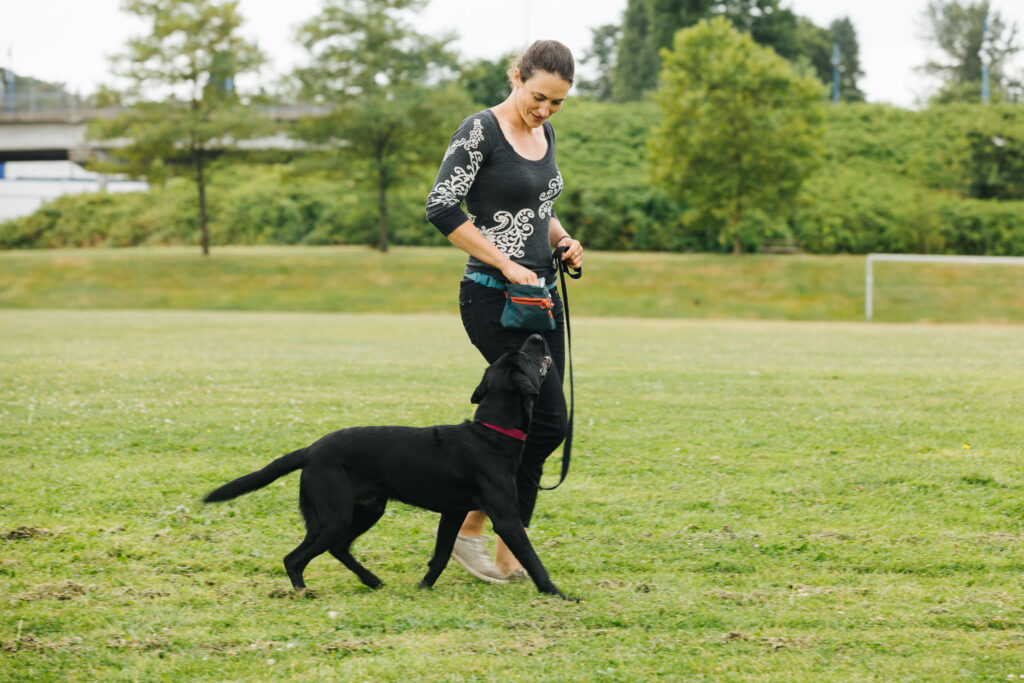Kind Corner: Addressing unwanted behaviour in dogs

 The issue with unwanted behaviour in dogs is that sometimes it’s hard to know the why behind the behaviour. So how to discourage unwanted behaviour in dogs?
The issue with unwanted behaviour in dogs is that sometimes it’s hard to know the why behind the behaviour. So how to discourage unwanted behaviour in dogs?
Jane Koopman, owner and trainer at In Partnership Dog Training, shares helpful tips on addressing unwanted behaviour in dogs.
Let’s get reading!
Dogs behave for a reason.
Every behaviour has a function or produces an outcome, and without a reason to perform a behaviour, a dog won’t do it. So to stop an unwanted behaviour, it is helpful to start by identifying why the dog is doing it.
Are they bored? Scared? Excited? Don’t know what else to do? Many times, we can prevent unwanted behaviour from happening before it starts – the easiest option! Other times we need to address the root of the issue.
Just telling your dog “no” means nothing to them, and it doesn’t tell them what they should do instead.

How do you prevent unwanted behaviour in dogs in the first place?
- Many problem behaviours in dogs are from a lack of exercise and enrichment. Too many dogs are expected to live boring lives sitting around the house all day doing nothing between a few short walks per day. This can lead to things like barking, chewing inappropriate objects or destroying furniture. Providing enough quality exercise such as ball chasing, longer hikes, runs on the beach or long line (a 20-30’ static leash) walks with more freedom to wander and sniff even if off-leash skills are not yet in place are all great options for exercise as leash walks barely count for many dogs. Equally important is mental exercise and enrichment, such as problem-solving games, puzzle toys, training games and opportunities to sniff and work for their food, resulting in a dog that is happier to chill at the appropriate times.
- Management is your friend. Do not give your dog the freedom to rehearse an unwanted behaviour and learn how fun it is. Keep things you don’t want them to have out of their reach or close off access to areas of the house where they can get in trouble. X-pens and baby gates are super helpful!
- Provide your dog with the opportunity and encouragement to do the right behaviours. For example, give a dog who loves to chew approved chew toys in a dog-proof area where they don’t have access to ‘illegal’ chew items. Once they learn what the correct behaviour is (you can even reward them with treats while they are chewing the right thing!), you can slowly give them more freedom.
- Head them off before they can misbehave. Does your dog always paw at you for attention when you sit down to watch a movie? Strategically give them their treat dispensing toy right before you sit down to keep them occupied.
- Reinforce the behaviours you DO like. If your dog is doing the correct thing- being quiet, sitting, looking at you to check in on walks- make it worth their while with a food reward! Reinforce them with really good treats like dried fish, pieces of cheese or chicken. This increases the likelihood of this behaviour being repeated.

If your dog is already “misbehaving,” how do you get them to stop?
- Ask for an alternate behaviour your dog is good at. Rather than mugging you for attention while you watch your movie, ask your dog for a down at your feet or to lie on their bed. Intermittently reward them for maintaining this position. Start with a high rate of reinforcement and then you can space out treats more. Be sure to train the alternate behaviour outside of context first.
- Avoid reinforcing unwanted behaviours with attention. Try to ignore the behaviour until it stops. This can be hard, especially if they are chewing your shoes or barking in your apartment. Dogs are more persistent than we are, so all of the above options for preventing unwanted behaviour are better!
- Use timeouts. Remove your dog from what they seek. If they want attention and are barking, gently move them to a dog-proof room or a crate (only if happily crate trained), away from the attention they want. Release after a minute, only if quiet. Are they misbehaving at the dog park? Leave. The key to timeouts is lots of repetition. The dog needs a chance to see the pattern and timeliness. Timeouts need to come immediately after the infraction.
Remember, dogs are animals! Barking, digging, playing, sniffing, chewing, eating, and saying hi are all normal things for dogs to do in a dog world.
We ask a lot of them when we ask them not to do these things. Have patience with your dog, let them act like a dog whenever you can and remember that training is an ongoing journey!
Good luck!